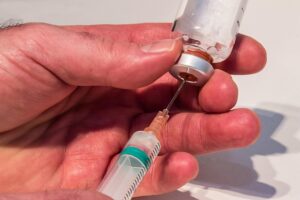Youth in a Syringe: Exploring the Benefits and Risks of Injectable Steroids
Let’s be real—who wouldn’t want to turn back the clock a bit? Whether it’s more energy, smoother skin, or just looking better in a T-shirt, the idea of staying young forever is pretty tempting. That’s where injectable steroids have entered the chat. Once mainly associated with bodybuilders and pro athletes, they’re now getting buzz as a kind of modern fountain of youth. But are they the secret to staying young—or are they just setting us up for a major health crisis down the line?
The Appeal of Injectable Steroids
 Injectable anabolic steroids (we’re not talking about the corticosteroids used to treat inflammation here) are synthetic versions of testosterone. Injectable Steroids help boost muscle growth, improve recovery time, and—here’s the kicker—can give users a younger-looking, more energized vibe. Sounds amazing, right? Some people use them to counteract the natural drop in testosterone that comes with age. This decline can lead to fatigue, lower libido, muscle loss, and even mood swings. Steroids seem to reverse that. You’ll hear stories of people in their 40s, 50s, and even 60s hitting the gym harder than ever, regaining confidence, and feeling years younger.
Injectable anabolic steroids (we’re not talking about the corticosteroids used to treat inflammation here) are synthetic versions of testosterone. Injectable Steroids help boost muscle growth, improve recovery time, and—here’s the kicker—can give users a younger-looking, more energized vibe. Sounds amazing, right? Some people use them to counteract the natural drop in testosterone that comes with age. This decline can lead to fatigue, lower libido, muscle loss, and even mood swings. Steroids seem to reverse that. You’ll hear stories of people in their 40s, 50s, and even 60s hitting the gym harder than ever, regaining confidence, and feeling years younger.
Here’s the Flip Side
Injectable steroids aren’t some magical anti-aging potion. They come with a laundry list of potential side effects that range from annoying to downright dangerous. We’re talking liver damage, heart problems, high blood pressure, mood swings, and even a higher risk of stroke. Long-term use can mess with your body’s natural hormone production, leading to dependency. For men, this could mean shrinking testicles and infertility. For women, it could mean a deepened voice and changes in body hair. There’s also the mental health aspect. Some users experience “roid rage”—sudden bursts of aggression—and even depression when they come off a cycle. That emotional rollercoaster is no joke.
Legal and Ethical Gray Areas
 Here’s the thing—non-medical use of anabolic steroids is illegal in a lot of places. In the U.S., they’re classified as a Schedule III controlled substance. That means possessing or using them without a prescription is a federal offense. But that hasn’t stopped people from getting their hands on them through black market channels or sketchy online “clinics.” That comes with its own set of risks—like counterfeit products, infections from unsanitary needles, and zero medical supervision. Injectable steroids might seem like a quick fix to recapture youth and vitality, but the truth is far more complicated.
Here’s the thing—non-medical use of anabolic steroids is illegal in a lot of places. In the U.S., they’re classified as a Schedule III controlled substance. That means possessing or using them without a prescription is a federal offense. But that hasn’t stopped people from getting their hands on them through black market channels or sketchy online “clinics.” That comes with its own set of risks—like counterfeit products, infections from unsanitary needles, and zero medical supervision. Injectable steroids might seem like a quick fix to recapture youth and vitality, but the truth is far more complicated.
While some may see short-term benefits like increased energy, muscle tone, or confidence, the long-term risks can be serious—and sometimes irreversible. The key takeaway? There’s no magic shot for staying young. If you’re considering steroids, make sure it’s under proper medical guidance and not just a shortcut driven by vanity. Aging is natural, and staying healthy should always trump chasing unrealistic ideals.

